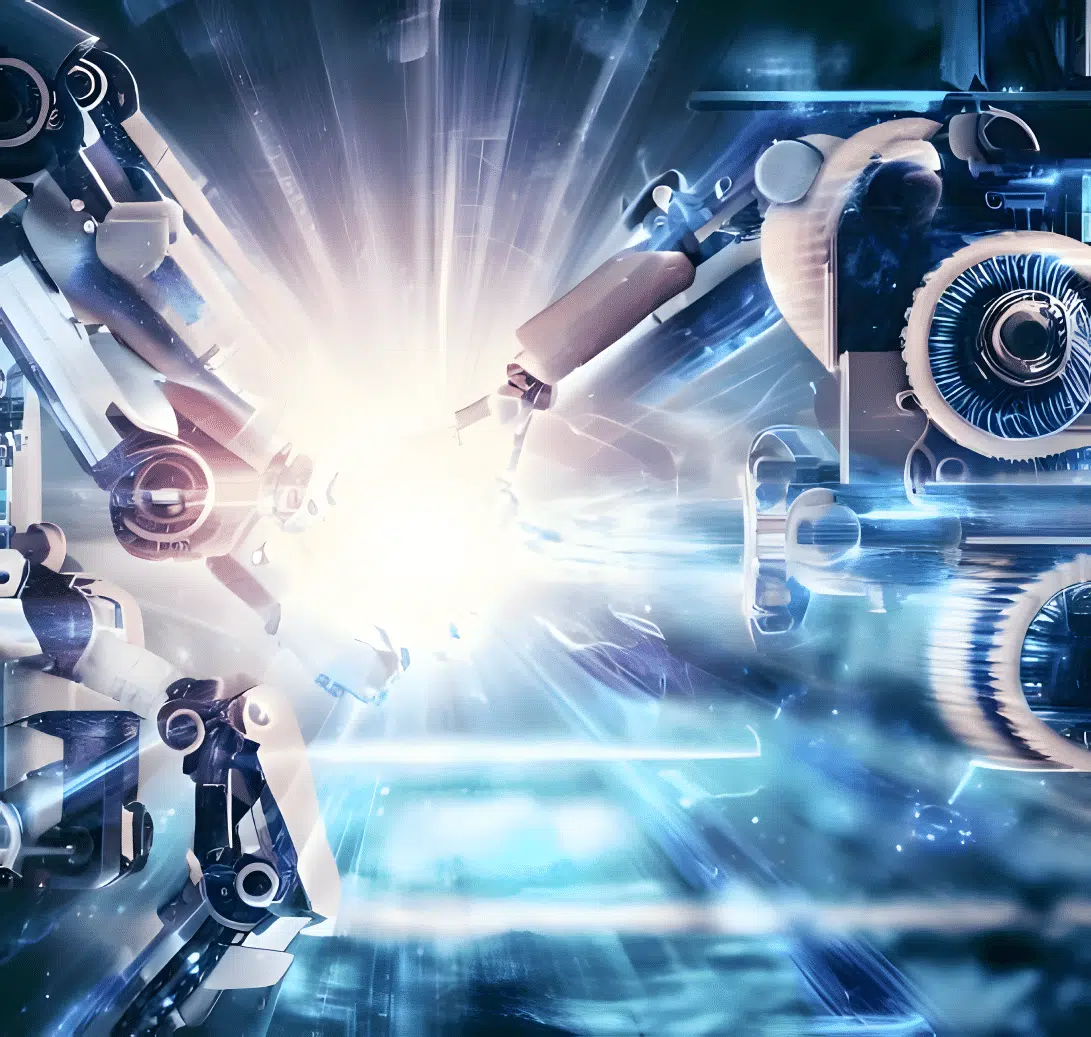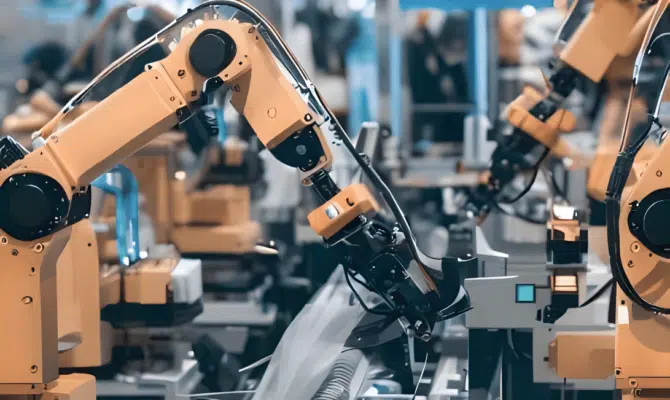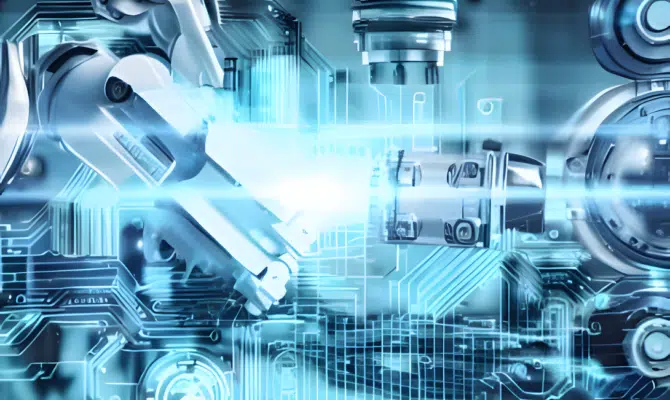The Transformative Power of Robotic Integration in Industrial Automation

In the competitive landscape of industrial production, the driving force behind sustainability and progress is the continuous evolution of technology. One such game-changing advancement is robotic integration, which serves as the cornerstone of modern industrial automation. This powerful technology has ushered in a new era in manufacturing operations, offering improvements in productivity, quality, and cost reductions that were previously unimaginable.
However, the road to fully exploiting the potential of robotic systems integration is paved with complexity. It necessitates not just technical expertise, but also strategic planning, a deep understanding of manufacturing processes, and ongoing support. That's where this comprehensive guide comes into play.
We will cover:
- The Power of Robotic Integration in Industrial Automation: How it's providing solutions for increased productivity and consistency.
- Navigating Challenges in Robotic Integration: Unpacking the complexities and potential obstacles in the journey towards seamless robotic integration..
- Choosing the Right Robotic Systems Integrator: Providing a roadmap to select the ideal integration partner, who can help you overcome technical hurdles.
- Integrated Automation and Robotics For Future-Proofing Your Operations: Discussing the convergence of automation and robotics, and how this synergy can fortify your operations against future revolutions.
The Power of Robotics Systems Integration in Industrial Automation
The Transformative Impact of a Robotics Systems Integration on Efficiency and Productivity
Engaging a robotics systems integrator offers a multitude of benefits, especially in terms of efficiency and productivity:
Streamlined operations: Robotic systems, with their high-speed operation and precision, outperform human capabilities in repetitive and time-consuming tasks, thereby streamlining operations.
Reduced cycle times: In industries like automotive, robotic arms perform tasks like welding and painting at a consistent speed, significantly reducing cycle times.
Optimized workforce utilization: With robots handling repetitive tasks, human workers can focus on more complex, decision-making tasks, thus leveraging their skills more effectively.
However, the role of a robotics systems integration is not limited to implementing robotic systems. It also plays a crucial role in integrating automation into the existing setup - a concept known as integrated automation and robotics.
Integrated Automation and Robotics: The Next Level of Operational Efficiency
Integrated automation and robotics refer to the fusion of advanced robotics and existing automation systems within the manufacturing processes. It's a step further from just incorporating robotics, aiming to create a holistic automated environment. A robotics systems integrator or a robot integrator plays a pivotal role in achieving this integration.
However, the journey to successful robotic integration isn't without challenges. The next section will delve into these challenges and how a robotics systems integrator can help navigate them to ensure a seamless transition to a robotic environment.
Navigating Challenges in Robotic Integration
Integrating robotics into manufacturing processes can undoubtedly bring significant benefits. However, it's essential to understand that the journey is not always smooth sailing. Several challenges can emerge during the process, which businesses must prepare for and adequately address.
The Complexity of System Integration
The integration of robotic systems is a complex process that involves the precise synchronization of multiple elements. From the robots themselves to the control systems, every component needs to work in perfect harmony. A minor discrepancy can lead to significant operational issues, potentially impacting productivity and efficiency. This complexity calls for the expertise of a skilled robotics integrator, who can ensure seamless integration.
Workforce Adaptation
Introducing robotics into a traditionally human-operated environment can create apprehension among the workforce. Employees might fear job loss or worry about the need to acquire new skills to work alongside robots. These concerns need to be addressed proactively by providing reassurances about job security and offering necessary training and support.
Cost and Return on Investment (ROI)
While robotics can reduce operational costs in the long run, the initial investment can be heavy for some businesses. It's crucial to calculate the expected ROI accurately and consider various factors, including cost savings from increased efficiency, reduced waste, and improved product quality.
Maintaining and Upgrading Systems
Robotics systems require ongoing maintenance to ensure optimal performance. Additionally, as technology advances, systems may need to be upgraded, which can be a complex and costly process. It's crucial to have a strategy in place for maintenance and upgrades, and to factor these costs into the overall budget.
Scalability
As your business grows, so does the need for your robotic systems to scale. Scalability should be a key consideration from the outset, ensuring that the systems can be adapted and expanded to meet future requirements.
By recognizing and planning for these challenges, you can ensure a smoother transition to robotic integration, maximizing the benefits while minimizing potential issues. In the next section, we will discuss how to choose the right robotics systems integrator to guide you through this process and help overcome these challenges.
Finding the Ideal Robotics Systems Integrator: Balancing Technical Proficiency and Strategic Insight

Choosing the right robotics systems integrator is a critical decision that requires careful consideration of both technical expertise and strategic foresight. A competent robotics integrator should possess a variety of skills, including proficiency in programming languages, a deep understanding of robotic hardware, and control systems knowledge. Additionally, they should demonstrate a visionary approach, commitment to continuous learning, problem-solving capabilities, and offer long-term support and maintenance.
The Crucial Role of a Robotics Systems Integrator
A robotics systems integrator is a specialized professional who incorporates advanced robotics into existing manufacturing operations. Their role is pivotal in the automation journey, as they provide:
- Customized solutions: They analyze the unique needs and constraints of each manufacturing setup and design bespoke solutions that enhance productivity and efficiency.
- End-to-end services: From understanding the client's requirements to designing, installing, and maintaining the robotic system, a robotics systems integrator handles it all.
- Workforce training: They offer comprehensive training programs to help the workforce adapt to the new robotic systems, ensuring smooth operation and minimal downtime.
Proficiency in Programming Languages
Automation systems rely heavily on programming languages for operation and efficiency, making this expertise a key requirement for a proficient robotics integrator. They should be adept in:
- PLC Programming: Proficiency in PLC (Programmable Logic Controller) programming languages such as Ladder Logic, Structured Text, or Function Block Diagram is essential. These skills are crucial for controlling the broader system, including interfacing between devices and managing safety protocols.
- High-Level Programming Languages: A familiarity with high-level languages like Python, C++, or Java is also beneficial. These languages are often used for tasks such as system simulation, data analysis, and complex algorithm development.
Deep Understanding of Robotic Hardware
A robotics integrator's ability to understand, operate, and troubleshoot robotic hardware is a crucial skill. This includes knowledge of different types of robots (Robot, Cobot, SCARA, Parallel, etc.), end tooling (grippers, vacuum cups, welding torches, etc.), and sensors (vision systems, force-torque sensors, proximity sensors, etc.).
Control Systems Knowledge
Understanding control systems is a vital part of the robotics integrator role. This involves knowledge of the design and implementation of control systems, which are responsible for managing the behavior of machines and processes.
Safety Standards
A competent robot integrator must have a thorough understanding of safety standards such as ISO 10218, ISO/TS 15066, and RIA R15.06. These standards govern the design and integration of robotic systems, ensuring the safety of workers and equipment.
Visionary Approach
Look for a robotics integrator who anticipates future industry trends and demands, and designs adaptable and scalable robotic systems. This ensures that your investment continues to yield returns in the long run.
Problem-Solving Capabilities
The best robotics systems integrators are adept problem solvers, excelling at diagnosing and resolving complex technical issues, ensuring your robotic systems function optimally.
Commitment to Continuous Learning
With the rapid advancement of integrated automation and robotics technology, your chosen robotics integrator must demonstrate a commitment to continuous learning.
Long-Term Support and Maintenance
A proactive robotics systems integrator understands that their job doesn't end with the successful installation of your robotic system. They should provide comprehensive after-sales support, including regular maintenance, system upgrades, and staff training.
Choosing a robotics systems integrator with these attributes ensures that you are partnering with a team that can solve current challenges and help you seize future opportunities. This balanced approach can significantly enhance the success and longevity of your industrial automation strategy.
Integrated Automation and Robotics: The Key to Future-Proofing Your Operations
Synergizing Automation and Robotics
Integrated automation and robotics isn't a mere amalgamation of two technologies; it's a well-orchestrated symphony where each element complements and amplifies the other's capabilities. Automation brings the promise of optimized, consistent, and high-quality output, while robotics provides the flexibility, precision, and adaptability to meet dynamic market demands.
Maintaining Operational Resilience through Integrated Automation and Robotics
The dynamics of the industrial landscape are in constant flux, with changes being driven by evolving consumer demands, regulatory shifts, and technological advancements. By leveraging integrated automation and robotics, you position your operations to navigate these changes effectively.
Scalability for Growth
Growth is an integral aspect of any business strategy, but it often comes with increased complexity. A robotics integrator plays a vital role in managing this complexity, designing scalable solutions that can expand in tandem with your business.
Sustainability for the Future
In today's eco-conscious world, sustainability is more than a buzzword—it's a business imperative. Integrated automation and robotics can contribute significantly to your sustainability efforts.
The Role of a Robotics Integrator in This Journey
Embracing integrated automation and robotics is a significant step, but it's one you don't have to take alone. A seasoned robotics integrator can guide you through this transition, bringing their technical expertise, problem-solving capabilities, and visionary approach to your project.
They will ensure the seamless integration of your automation and robotics systems, helping you unlock their full potential and future-proof your operations.
In this rapidly evolving industrial era, integrated automation and robotics serve as powerful tools for staying competitive and driving growth. With a competent robotics integrator as your partner, you can confidently stride into the future, ready to harness the opportunities that lie ahead.




